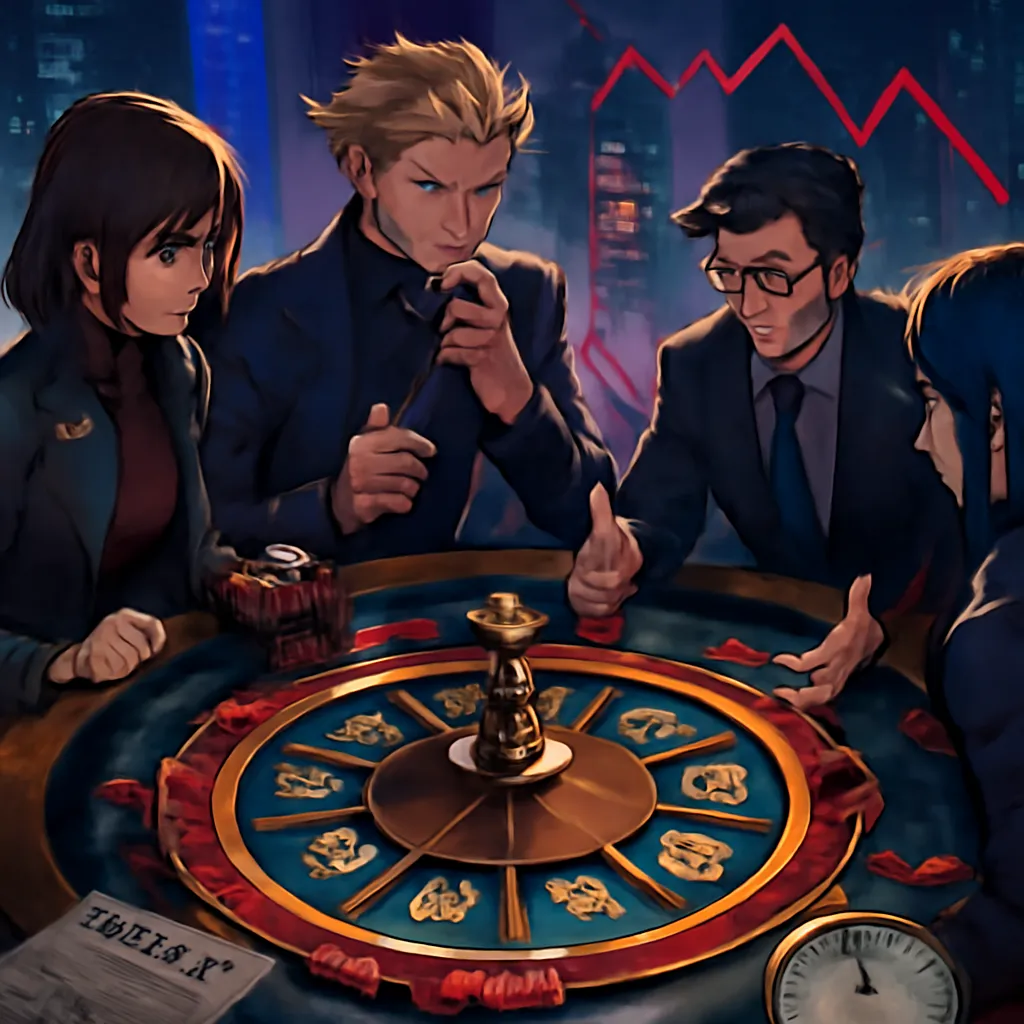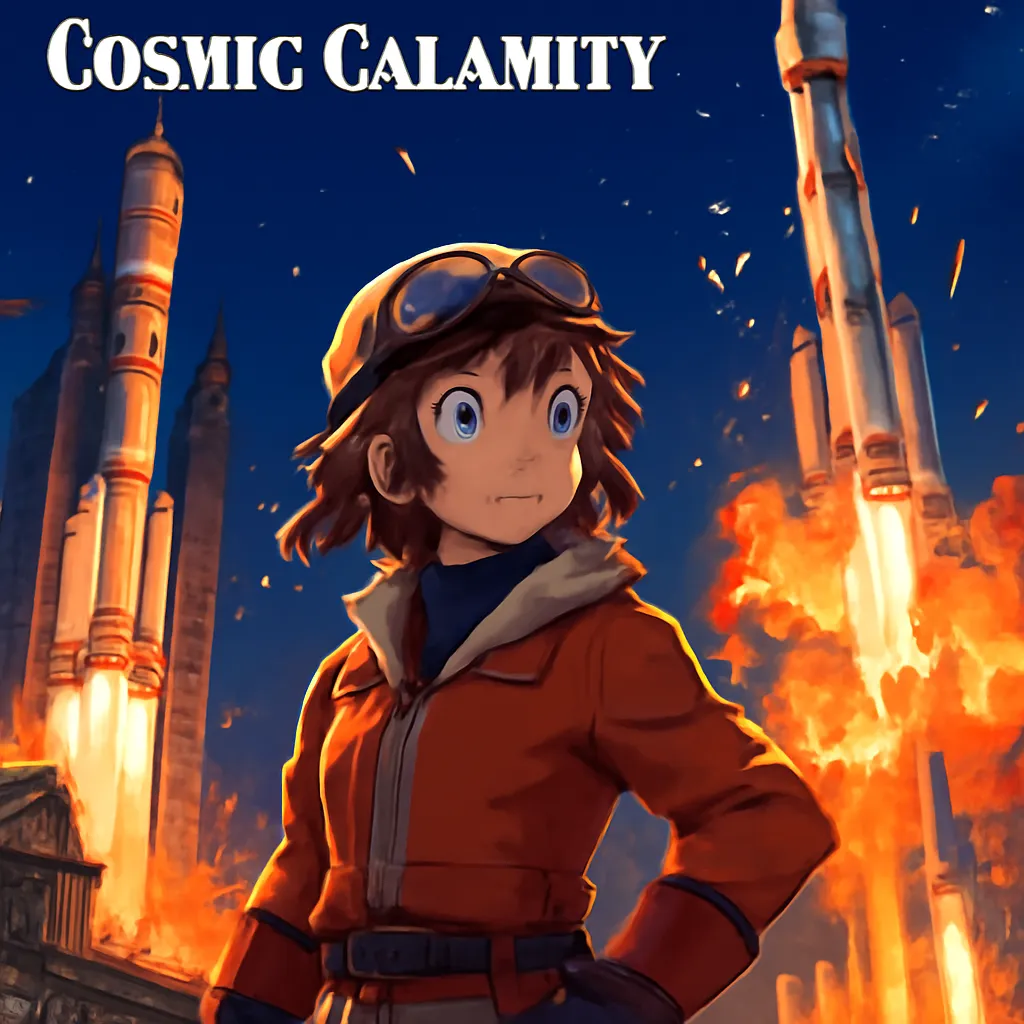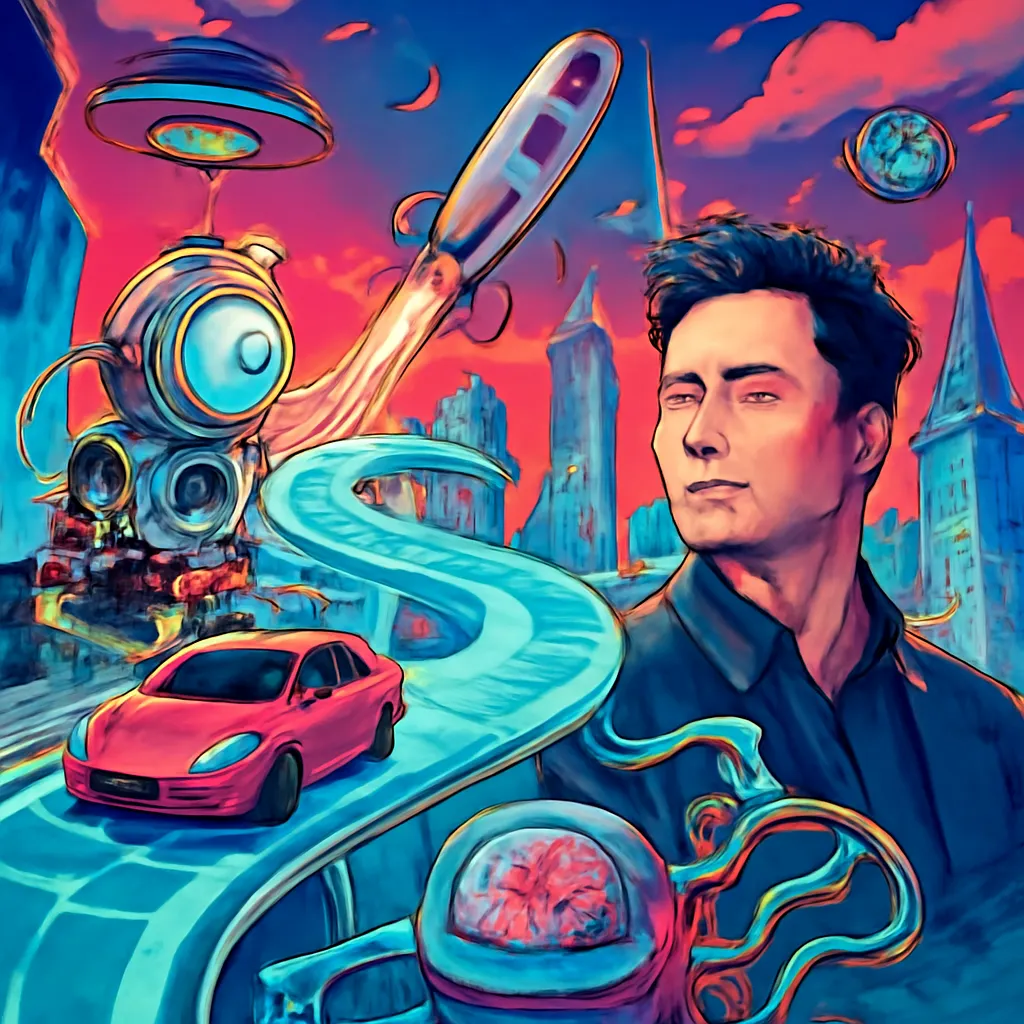Picture yourself sleeping on an office couch because you can't afford an apartment. Now, pile up millions in debt, throw in rocket explosions, and add the haunting dilemma of choosing which of your business 'children' to save from starvation during a financial apocalypse. That’s not a Netflix plot—it’s literally the reality Elon Musk faced. I’ll admit, when I once tried to launch my own side hustle, the scariest thing was running out of coffee...so, Musk’s resilience puts my caffeine ‘crisis’ to shame. Let’s drop the image of effortless genius and look instead at the wild, wonky, and sometimes heartbreaking side of making innovation happen, Musk-style.
Breaking Yourself for a Dream: Elon Musk’s Relentless Work Ethic (And Why You Shouldn’t Copy It)
Imagine waking up in a factory, not because you had a late shift, but because you never left. That’s not a startup myth—it’s the reality of Elon Musk’s entrepreneurial journey during Tesla’s most desperate days. If you’re searching for the ultimate example of work ethic, Musk’s story delivers. But here’s the twist: even he says, don’t do what I did.
Let’s get real about Elon Musk challenges. When Tesla was fighting for survival, Musk didn’t just put in long hours—he blurred the line between work and existence. We’re talking 22-hour days, seven days a week. No weekends. No “off” switch. He slept on the factory floor, sometimes on a beanbag, sometimes under his desk. It sounds like the stuff of startup legends, but Musk himself calls it out for what it is:
'No one should put this many hours into work. This is not good.'
Why did he do it? Fear. Not the kind that keeps you up at night, but the kind that keeps you from ever going home. Musk was convinced that if he didn’t make these personal sacrifices, Tesla would die. He wasn’t just the CEO; he was everywhere—paint shop, assembly line, body shop. If a machine broke, he was there. If a process failed, he rolled up his sleeves. This wasn’t about ego or proving a point. It was survival mode, pure and simple.
But here’s the thing about this kind of work ethic: it comes at a cost. Musk openly admits the pain. Sleep deprivation was constant. The mental and physical toll was brutal. He’s described it as hurting his brain and his heart. Relationships suffered. Health suffered. The price of chasing a dream at this level? It’s steep, and Musk doesn’t sugarcoat it.
You might think this is the blueprint for startup success. Maybe you’re tempted to follow in those sleepless footsteps. But Musk is clear—this isn’t a model to copy. In his own words, “People should not work this hard. I’m not—they should not do this. This is too—it’s very painful.” The message is loud and clear: the extreme work culture that defined Tesla’s early years is not a badge of honor. It’s a warning.
Research shows that Musk’s approach led to dangerous levels of sacrifice. The 2008 financial crisis nearly wiped out both Tesla and SpaceX. He poured in his own money, risked everything, and still faced constant setbacks—failed rocket launches, missed deadlines, public skepticism. The stress was relentless. And yet, he kept going, driven by a vision bigger than himself. But even as he pushed through these startup challenges, Musk now points to the importance of work-life balance. He doesn’t recommend his path, not for you, not for anyone.
If you’re on your own entrepreneurial journey, it’s tempting to idolize the hustle. But Musk’s story is a reminder: relentless work ethic can break you as much as it can build a company. The real lesson? Know the cost, and don’t be afraid to draw the line. Sometimes, the bravest thing you can do is rest.

Financial Roulette: Betting It All in the Face of a Crisis
Imagine standing at the edge of a cliff, wind howling, knowing you have just enough rope to save yourself—or maybe, just maybe, two people you care about. That’s the kind of financial struggle Elon Musk faced in 2008, when the world’s economy was unraveling and his two “children”—Tesla and SpaceX—were gasping for air. If you’ve ever wondered what true entrepreneurial journey looks like, it’s not all glass offices and gutsy headlines. Sometimes, it’s a desperate game of financial roulette, with everything on the line.
Let’s set the scene: The global financial crisis is in full swing. Banks are collapsing. Investors are running for cover. And Musk? He’s staring at his bank account, seeing only $30 to $40 million left—money that’s supposed to keep both Tesla and SpaceX alive. It’s not just a business decision. It’s an existential crisis. Do you pour every last dollar into one company and let the other wither away? Or do you split the funds, knowing that both might die as a result?
Musk once described this moment with a raw honesty that’s rare in the world of business. He said,
'How do you say your child should not have food?'That’s the emotional depth of the entrepreneurial struggle. For Musk, these weren’t just companies. They were living, breathing dreams—ventures he’d nursed from birth, each with their own promise and potential. Research shows that founders often develop deep emotional bonds with their startups, and Musk’s analogy of treating his ventures as ‘family’ rather than mere investments couldn’t be more apt.
So, what did he do? He split the money. Every last dollar. Half to Tesla. Half to SpaceX. It was a move that defied conventional startup survival strategies, especially in the face of such a brutal financial crisis impact. Most experts would have told him to cut his losses, pick a winner, and walk away from the other. But that’s not how Musk operates. He risked everything—his fortune, his reputation, and, frankly, his sanity—on the hope that both companies could claw their way back from the brink.
The stakes? Astronomical. Both Tesla and SpaceX were at real risk of dying. Tesla was struggling to deliver its first electric cars, facing constant skepticism and relentless cash burn. SpaceX had just suffered multiple failed rocket launches, with critics lining up to declare the company dead on arrival. The pressure was relentless. Every day felt like a new test of endurance, a fresh wave of doubt and fear.
Yet, against all odds, both companies survived. It wasn’t luck. It was a razor’s edge, a series of high-stakes decisions that could have gone either way. Musk’s willingness to embrace risk, to treat failure as a stepping stone rather than a dead end, is what ultimately set him apart. Studies indicate that startup survival often hinges on emotionally fraught, high-stakes decisions—exactly the kind Musk faced in 2008.
If you’re charting your own entrepreneurial journey, Musk’s story is a stark reminder: the path to innovation is rarely smooth. Sometimes, you’ll be forced to gamble everything, not because you want to, but because you have to. And when that moment comes, it’s not just about money—it’s about heart, resilience, and the willingness to bet it all, even when the odds seem impossible.

Setbacks, Rocket Explosions, and the Art of Not Giving Up
Imagine standing in front of a group of Russian rocket engineers, asking to buy their biggest, most intimidating rockets. You don’t speak the language. You’re not a government. You’re just a guy with a dream and a bit of money. They look at you like you’ve lost your mind. That’s the kind of technical setback and public skepticism Elon Musk faced at the start of SpaceX. And honestly, it only got weirder from there.
Before SpaceX became a household name, it was a company teetering on the edge of collapse. The first three rocket launches? All failures. Not the kind of “oops, minor glitch” failures, either. We’re talking full-blown, fiery explosions. Each one broadcast for the world to see. If you’ve ever felt embarrassed by a mistake at work, imagine having your technical setbacks replayed on YouTube, with experts and internet trolls alike calling you delusional.
But here’s the thing: Musk didn’t just face technical setbacks. He ran headlong into them, again and again. He was desperate enough to travel to Russia three times, hoping to buy refurbished ICBMs. Yes, actual intercontinental ballistic missiles. The Russians thought he was crazy. Maybe he was. But he was also persistent. As Musk recounts, “One good friend of mine collected a whole series of videos of rockets blowing up and made me watch those.” The message was clear: rockets fail. A lot. And if you’re not ready for that, you’re not ready for space.
The technical challenges weren’t just about hardware. Musk tried, really tried, to hire the best rocket engineers in the world. But the good ones wouldn’t join. The bad ones? Not worth the risk. So, he did what any determined entrepreneur would do—he became the chief engineer himself. “If I could have found somebody better, then we would have maybe had less than three failures,” Musk admitted. But there was no one else. It was either step up or watch the dream die.
By the time the third SpaceX launch failed, the company was running on fumes. Money was almost gone. Parts were scavenged and cobbled together for one last shot. The fourth launch wasn’t just another test—it was the make-or-break moment. If it failed, SpaceX would be finished. The pressure was immense. Even space legends doubted him. Public ridicule was everywhere. But Musk’s response?
“I don’t ever give up. I’d have to be dead or completely incapacitated.”
That’s not just bravado. It’s resilience and determination in its rawest form. Research shows that embracing public failure and taking technical risks—especially when there are no experts to hire—is often the only path to breakthrough innovation. Musk’s journey with SpaceX is a masterclass in this lesson. The technical setbacks, the SpaceX failures, the skepticism from all sides—these weren’t just obstacles. They were the crucible that forged the company’s culture.
And let’s not forget, these challenges weren’t limited to SpaceX. The early days of Tesla were just as brutal. Near bankruptcy, regulatory hurdles, and public doubt followed Musk everywhere. But the lessons from Tesla and SpaceX are clear: if you want to change the world, you need to be willing to fail—loudly, repeatedly, and in front of everyone. You need to keep going when everyone else says it’s time to quit.
So, next time you see a rocket launch, remember: behind every triumph is a trail of spectacular failures, and a stubborn refusal to give up.

Feedback Loops and Critics: Turning Doubt into Fuel
If you ever wondered what it really takes to break through in industries full of skepticism and criticism, look no further than Elon Musk’s journey. Musk’s path with Tesla and SpaceX wasn’t just paved with glass and guts—it was littered with doubt, setbacks, and a chorus of public skepticism from even the most unexpected places. But here’s the twist: Musk didn’t just tolerate criticism. He actively hunted it down, even when it stung the most.
Seeking Out the Harsh Truths
Most people shy away from negative feedback. It’s uncomfortable, sometimes even painful. But Musk? He leans in. He’s said it himself—when friends get a new product, he doesn’t want to hear what they love. Instead, he urges,
'When friends get a product, I say, look, I don't tell me what you like. Tell me what you don't like.'That’s not just a quirky habit. It’s a deliberate strategy, and it’s one of the core lessons from Tesla and SpaceX: real growth comes from facing flaws head-on.
This approach isn’t limited to friendly circles, either. Musk has been known to seek out feedback from “enemies” and skeptics. Sometimes, the harshest critics offer the most valuable insights. It’s not about ego—it’s about survival and innovation. Research shows that listening to negative feedback, even from rivals or industry skeptics, can spark the kind of growth you just can’t get from praise alone.
Learning from Setbacks—Literally
If you think watching your own failures on repeat sounds brutal, you’re not alone. But that’s exactly what Musk did. When SpaceX rockets exploded, a friend collected videos of every single failure and made Musk watch them. Not for entertainment, but for education. Every fiery crash, every setback, became a lesson. It’s a raw, sometimes humiliating process, but it’s how Musk and his teams learned to improve, launch after launch.
The early days of SpaceX were a masterclass in industry skepticism. The first three launches failed. The company was on the brink of collapse, scraping together parts and cash for a final, do-or-die attempt. Musk tried to hire the best rocket engineers, but when the good ones wouldn’t join and the bad ones weren’t worth it, he became chief engineer himself. That’s the reality behind the headlines—sometimes, you’re forced to fill the gaps with sheer determination.
When Heroes Become Skeptics
Here’s where it gets personal. You’d think that the legends of space—heroes like Neil Armstrong and Gene Cernan—would be cheering Musk on. After all, they inspired him to reach for the stars. But instead, they voiced public skepticism about commercial spaceflight, even testifying against Musk’s approach. For Musk, this wasn’t just criticism. It was heartbreaking. He’s admitted, “I was very sad to see that, because those guys are… heroes of mine, so it’s really tough.”
Yet, even this deep disappointment became fuel. Musk wished his idols would visit and see the work firsthand, believing it might change their minds. But whether support came from fans or opposition from heroes, he used it all as motivation. The lesson? Even the harshest industry skepticism can be a catalyst for innovation—if you’re willing to listen, learn, and keep moving forward.
In the end, Musk’s story is a reminder that embracing criticism—no matter how uncomfortable or unexpected—isn’t just about thick skin. It’s about turning doubt into the very thing that drives you to do better, go further, and prove what’s possible.
Magic, Misfits, and the Reluctant Entrepreneur: What Drives Someone to Try the Impossible?
If you’ve ever felt like you didn’t quite fit in, you’re in good company. Elon Musk, one of the most influential figures in technological innovation, started out feeling like a misfit. He once described his mind as “exploding with ideas,” a sensation that left him wondering if he was insane. It’s a feeling many creative people know well—the sense that your thoughts run on a different track from everyone else’s. For Musk, this wasn’t just a passing phase; it was the spark that ignited his journey toward innovation and perseverance.
The motivation behind technological innovation often begins with a sense of wonder. Musk found his inspiration in the words of Arthur C. Clarke: “Any sufficiently advanced technology is indistinguishable from magic.” This idea stuck with him. Imagine living three hundred years ago—flying, seeing across continents, or talking to someone miles away would have seemed like pure sorcery. Musk’s drive was simple: if he could advance technology, he could create that same sense of magic for people today. As he put it,
“If I can advance technology, that's like magic, and that would be really cool.”
But the road to innovation is rarely smooth. Musk’s early career struggles are legendary. In 1995, he couldn’t land a job at Netscape, one of the few internet companies at the time. He sent in his resume, even tried hanging out in the lobby, but was too shy to talk to anyone. So, what do you do when no one will hire you? For Musk, the answer was to start his own company. It wasn’t ambition or a grand plan—it was necessity. This accidental step launched him into entrepreneurship, and it’s a reminder that sometimes, the most remarkable journeys begin with rejection.
Of course, the story doesn’t end with a single leap. Musk’s commitment to vision has been tested again and again. Research shows that a sense of mission can drive relentless innovation, even from unlikely beginnings. Musk’s journey is proof. He’s faced financial crises, technical setbacks, and public skepticism. In 2008, he was forced to choose between saving Tesla or SpaceX, knowing that splitting his remaining funds might doom both. He described the experience as “like having a child—how do you say your child should not have food?” In the end, he split his resources, risking everything. Both companies survived, but only just.
What keeps someone going through all this? For Musk, it’s not just about profit. It’s about creating things people truly love—products that bring joy. He’s said that making something useful and delightful for others is what motivates him most. “How many things can you buy that you really love, that really give you joy? So rare. I wish there were more things. That’s what we’re trying to do.” This mission-driven philosophy is at the heart of his work, and it’s what sets him apart from so many others.
So, what drives someone to try the impossible? It’s a mix of wonder, necessity, and a relentless commitment to vision. Musk’s story is a testament to the power of embracing your inner misfit, following your curiosity, and never letting rejection be the end of your story. In the end, the weird reality of innovation is that it often starts with someone who just can’t help but chase a little bit of magic.
TL;DR: Elon Musk’s journey isn’t a highlight reel—more like a bumpy ride over a road paved with failure, financial cliffhangers, and relentless optimism. If you’re dreaming of entrepreneurship, buckle up and expect glass in your teeth.



